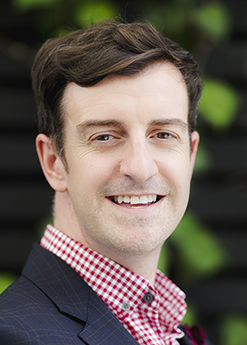Op Ed: Nick Thomson, Te Ara Ahunga Ora Retirement Commission Director, Financial Capability:
For a while I thought Tik Tok was just about viral dances and singing sea shanties – but with 4.9 billion views of content attached to the hashtag ‘personal finance’ that’s clearly not the case.

Should we be concerned so many young people are turning to these short clips for advice about money? Not necessarily.
A quick scan of Tik Tok shows a plethora of videos covering everything from get rich schemes, how taxes work, renting vs buying a home, general money tips, right through to explaining compound interest. Some of this content has been created by professional financial advisers, but the vast majority is by amateurs.
According to data from digital KiwiSaver adviser BetterSaver, social media platforms like Tik Tok, Instagram and YouTube are more popular destinations for 16- to 24-year-olds to get advice on their money matters than their schools. Of the 204 respondents, 27% turned to social media as a source compared to 19% who used their school. Unsurprisingly, 83% turn to their parents for financial guidance.
The fact people are talking about money on social media isn’t necessarily a bad thing. The trick is using a variety of quality information sources and using a critical eye.
BetterSaver founder Joe Taylor talked to the Spinoff about these findings and his business and rightly pointed out that financial literacy isn’t a core subject in schools. However, that doesn’t mean it’s not being taught. You’ll find the vast majority of schools are weaving key personal finance information into everyday subjects in the curriculum.
Te Ara Ahunga Ora Retirement Commission launched Te whai hua – kia ora, Sorted in Schools in 2019, which now has 75% of New Zealand secondary schools and kura taking part.
It is the first government-backed financial education programme fully aligned with the curriculum, so can be taught as part of day-to-day classes in subjects as diverse as maths, social sciences, technology, English and even health. The resources cover topics ranging from debt and money management, to KiwiSaver and insurance, and include learning and assessment materials for NCEA unit and achievement standards.
More than 300 resources, designed by teachers for teachers, are already available through the website sortedinschools.org.nz, and we deliver free professional development workshops and webinars to help teachers feel confident to teach the subject. Ask your secondary school if you haven’t seen them using it.
In the past 12 months, 66.5% of schools and kura have used Te whai hua – kia ora. In the last year more than 300 teachers have completed professional development with our team of specialists, and 98% of teachers value Te whai hua – kia ora as a financial capability programme they like to use. And, it’s all free.
Alongside our training of secondary teachers, Banqer is also in primary schools with student-centred digital learning, and there are a number of sponsored programmes as well. While it isn’t compulsory, the curriculum is already crowded and a teacher’s day busy, so it can be a challenge to squeeze something else in, no matter how critical. Our collective approach has been to infiltrate through other subjects - and it works.
We know through our own research that financial literacy (knowledge) alone is not enough to change financial behaviour, but it is one of the building blocks of financial capability (understanding and action). Fun places like Tik Tok can help.
Young people score, on average, lower on many components of financial capability; for example, spending restraint, making informed product choices and knowledge of money management.
With easy access to online shopping, gaming, credit cards, buy-now, pay-later schemes, loans for cars and even loans from loan sharks, our young people are more at risk of incurring bad debt than any previous generation.
And many of the psychological factors are linked to age; for example, long-term thinking like saving for a house, or your retirement, does not come naturally at a young age.
The extent to which children learn their parents’ or caregivers’ habits or attitudes towards money has a significant impact. Those attitudes or habits may not always be good ones, but when young people do get to participate in household money management there are valuable learning opportunities.
Talking about money at home is a great thing to do and something that underpins knowledge. Our challenge is that the overall level of national understanding about money isn’t at the level it needs to be, so we need to extend our education and knowledge building beyond our young people.
There are plenty of resources out there to help people lift their financial capability. Sorted has been doing exactly that for the past 20 years (and indeed we’ve dipped our own toes in the TikTok pool). More recently there’s been a surge in the help and advice that’s now available across the financial capability sector.
You don’t have to look too far to find it, whether it’s through your financial provider, government agencies, non-profit organisations, or your community. Many of these work with us as partners of the National Strategy for Financial Capability which has created a framework to better align the work of the fincap sector.
While schools play a big role to lay the foundations, and there are multiple opportunities to incorporate financial capability into the existing curriculum, there’s work we all need to do together to help New Zealanders better understand money. Great financial capability comes from hearts, not just minds.
That might mean we all end up singing our own sea shanty about money in the near future.
